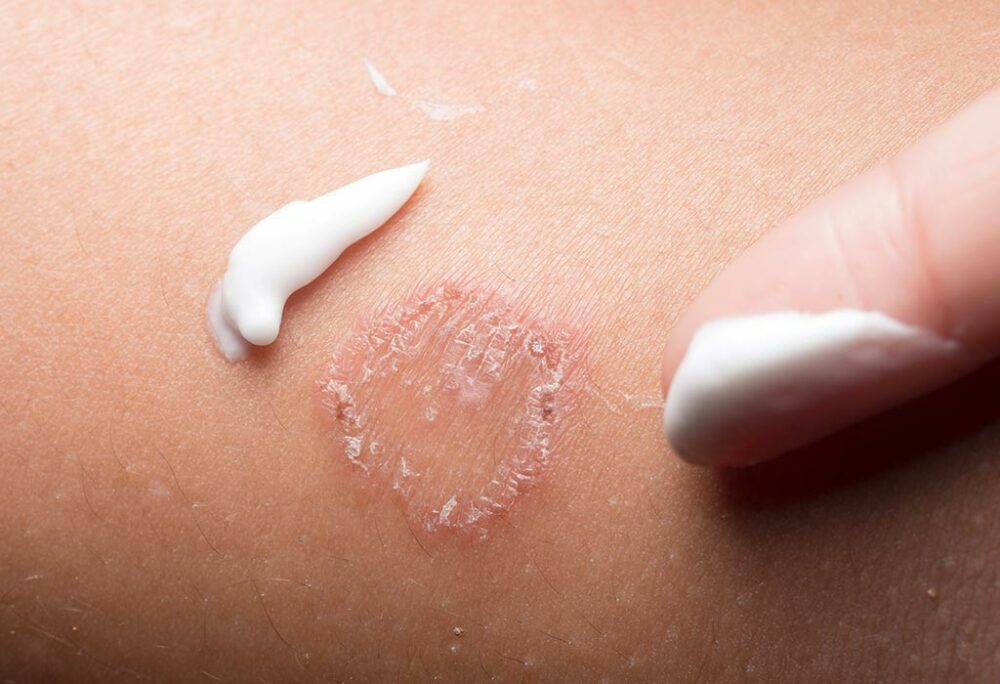Ringworm is a fungal infection that begins as a red patch of rashes on the skin. Initially, you will find a scaly area on the skin that itches that progresses into a slightly raised, ring-shaped rash. The rings vary in number, size, and position. The skin may become flaky and red and the rash often resembles a bullseye.

Complications followed by ringworm infection.
It is only rarely possible that ringworm may cause any serious complications. They usually occur and disappear within a few weeks with the help of treatment.
However, in those rare times of complications, the important question is: what does ringworm look like when it is healing? Or if it is even healing, or creating complications!
However, possible complications that you must look out for in a ringworm infection are:
- Spreading: It does not take much for ringworm to spread around. The mere contact can spread the infection to other parts of the body, or to even other people.
- Post-inflammatory hyperpigmentation: After ringworm is healed, you may see a dark mark left behind. This is usually common in people with darker complexions.
- Secondary infections: This happens when bacteria come in contact with the infected area. This is highly common in children as they are more prone to scratching or breaking the skin. This results in redness, pain, swelling, bumps, etc.
- Abscess: Pus-filled lumps may also form in the place of the ringworm, and they can be painful. If the wound is left untreated, these may cause bald patches, which can be temporary or permanent depending on the amount of damage done.
Although rare, the fungi that cause ringworm also cause a deeper infection in the skin. This infection is known as Mojocchi granuloma. In this infection, the fungus travels down past the hair follicle and into the dermis. Oral medications are recommended in this case.
What does ringworm look like when it is healing?
A ringworm infection goes through several stages before it begins to heal. It takes around 2 to 4 weeks for the infection to settle. For the first fifteen days, the ringworm spores may colonize your skin and symptoms may not be prominent. After that period, you may begin to see a circular rash on your body, and that is when the signs of ringworm show up.
This is the period when people see a doctor and start their treatment. Most of the time, anti-fungal creams are suggested. The process of healing begins and the infection becomes less and less contagious. Healing observations like less redness, peeling of the skin, scaling, etc, can be observed during the next fourteen days.
After this, the healed skin will be prominent and may not match the rest of the body. However, it is advised to continue the anti-fungal cream skin treatment in order to avoid any future fungal infections. You may see a doctor if further complications surface.